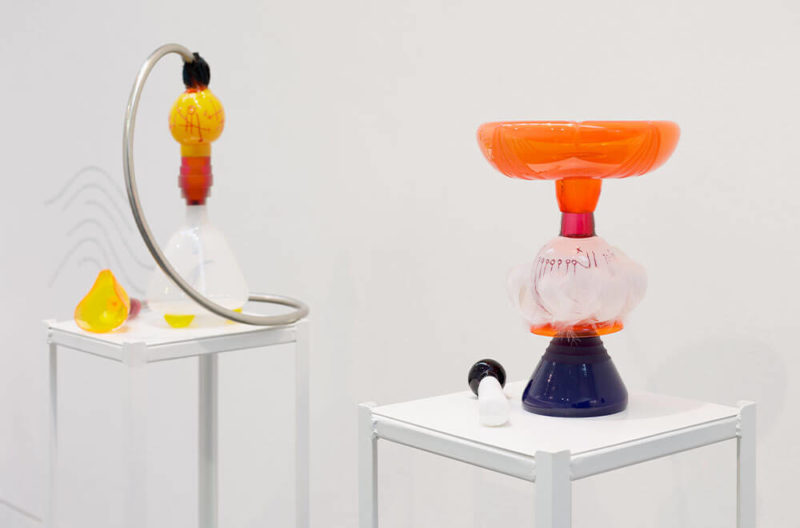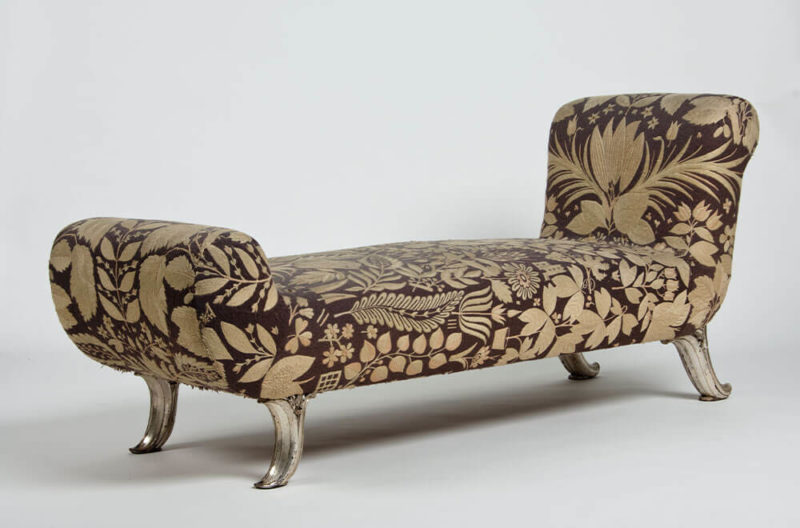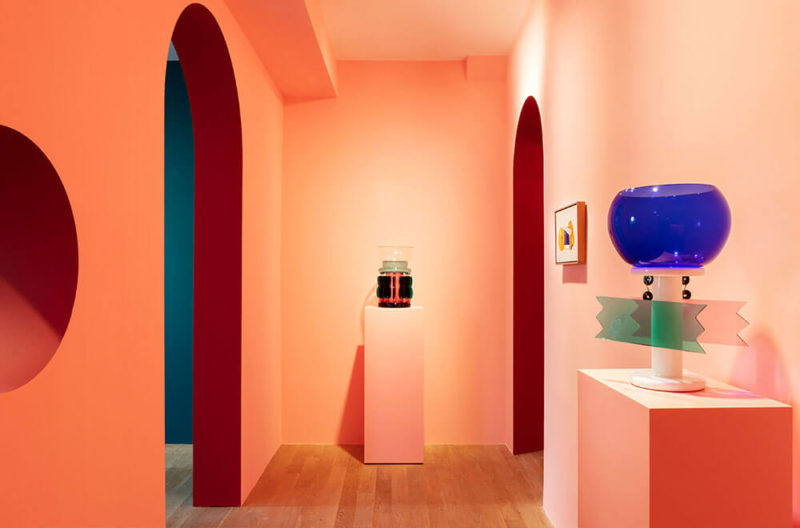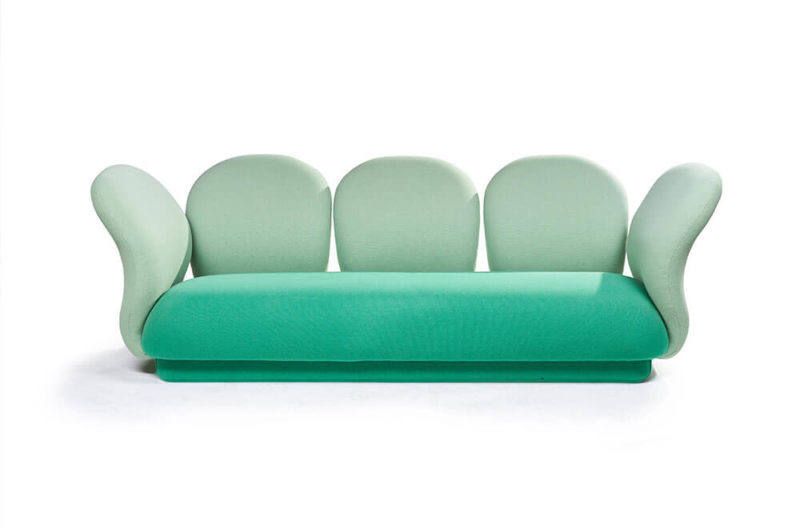‘Sofa’, circa 1955
Ico Parisi
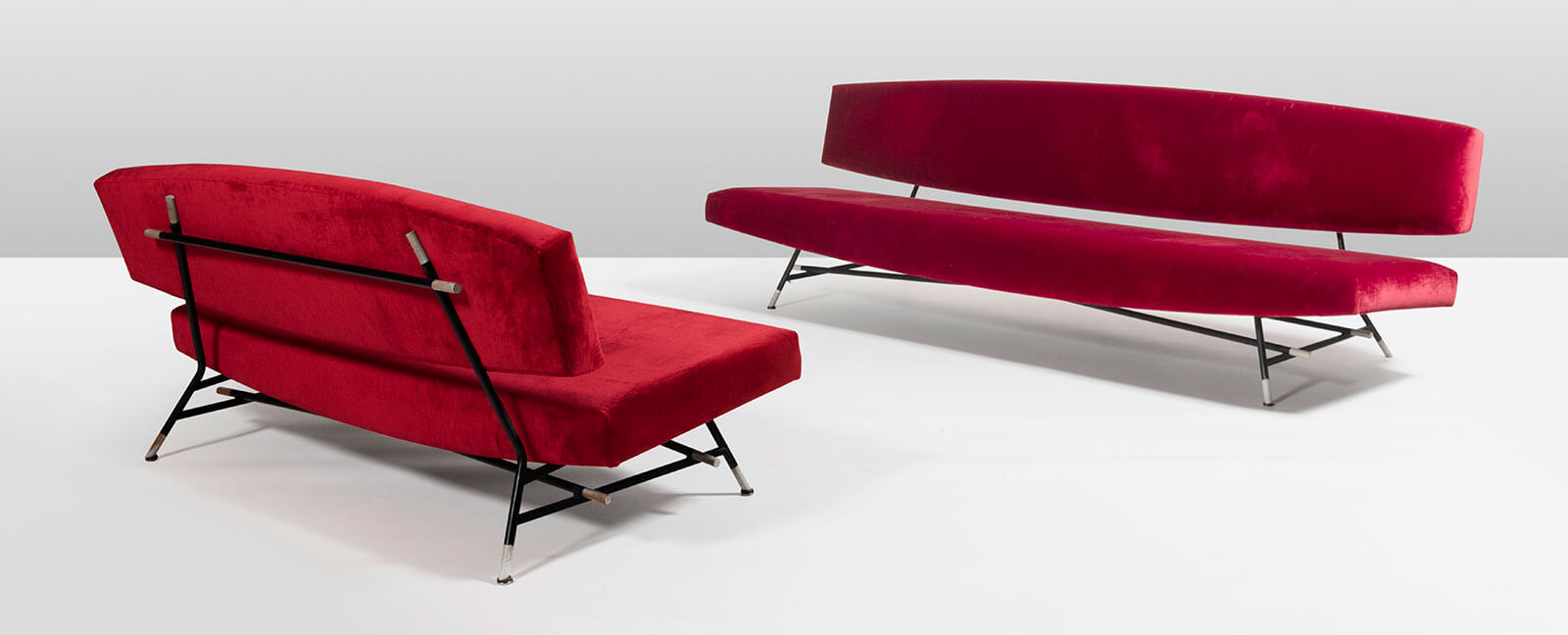
Ico Parisi, ‘Sofa’, circa 1955
COURTESY: Gokelaere & Robinson
DOMENICO “ICO” PARISI saw himself as a Renaissance man. An engineer, architect, photographer, film-maker and designer of furniture, glass and jewellery, he created objects that were a pure distillation of mid-20th century Italian modernism.
Design reflects its historical context and Parisi’s furniture can be seen as an expression of his personal history – itself a reflection of mid-20th century Italy. Born in 1916, he grew up in Palermo, Sicily, a conservative society saturated and bound by its past. When he was nine, his art-teacher father migrated north to build a new life for his family in Como – poles apart both geographically and culturally from the crumbling baroque of Italy’s Mezzogiorno. Como, in the 1920s and 30s, was a silk industry town at the epicentre of the brave new world envisioned by Benito Mussolini to rebuild a nation ruined by the Great War.
The young Parisi trained as a hands-on construction technician, then as an apprentice to the pioneering fascist, Rationalist architect Giuseppe Terragni. When war returned – interrupting Parisi’s career and ending the fascist illusion – he suffered its realities first hand as a soldier in Italy’s expeditionary force on the Russian front. Defeated and demobbed in 1943 he returned to build yet another new life, marrying Luisa Aiani in 1947, a pupil of the doyen of Italian modernist architecture, Gio Ponti. Together Ico and Luisa set up a design studio in Como, an extraordinary joint venture in a male-dominated cultural world. For nearly 50 years, their studio, La Ruota, was a hub of Italy’s avant-garde artistic and intellectual society.
An exhibition currently running at the Gokelaere & Robinson gallery in Paris brings together work by some of the most iconic designers of the period – Ettore Sottsass, Gino Sarfatti, Max Ingrand and Ico Parisi.
Among the standout pieces are a pair of Parisi sofas. Dating from around 1955 and designed for Cassina, the spare strength and elegance of their tubular steel skeletons offset the sensuality of crimson plush velvet upholstery. Marked by an extreme economy of materials, they avoid austerity by the subtle generosity of curved cushion and backrest. Light but substantial, functional yet aesthetic, they capture a very Italian balance of contradictions, simultaneously of their time and outside it.
The colour red has multiple significances: in 1950s Italy, red was the colour of the Communist flag, but also a Cardinal’s biretta.
‘Italian Design’ at Gokelaere & Robinson, Paris, until 4th April.




